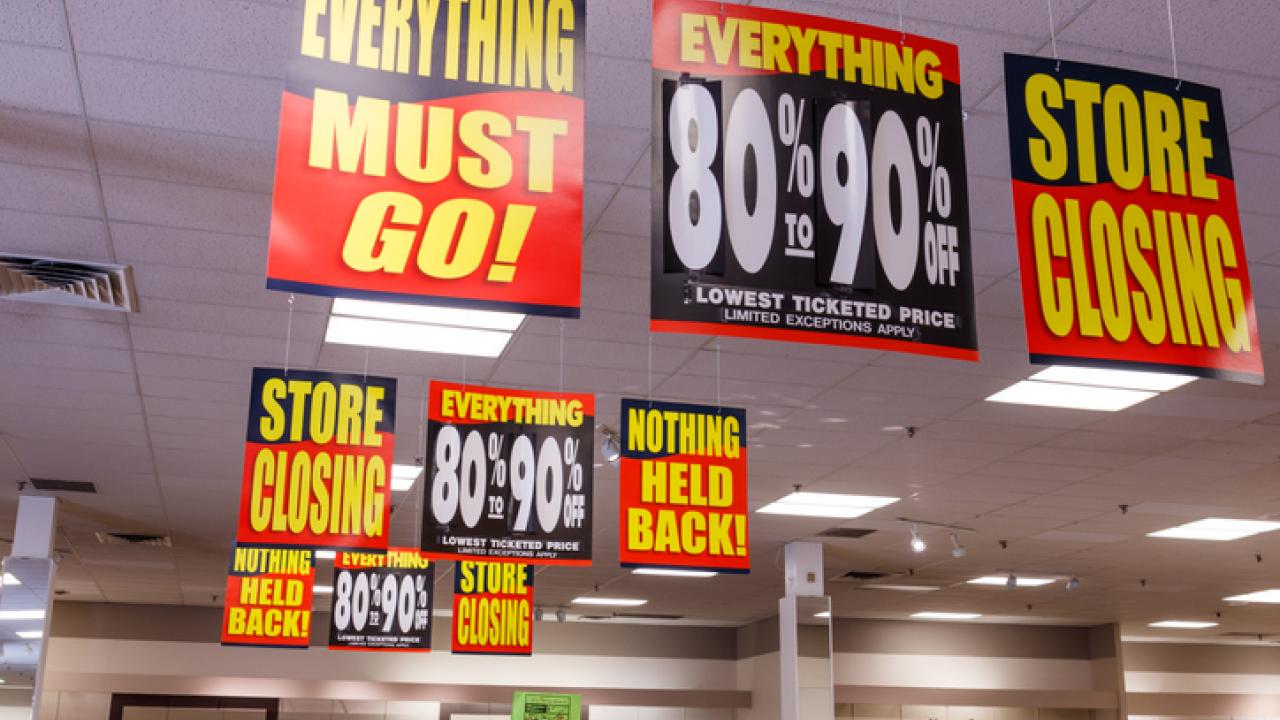This blog is excerpted from an original article in Forbes by Suzy Taherian, a lecturer at the UC Davis Graduate School of Management.
Neiman Marcus filed for bankruptcy in early May, and other department stores are lining up for the same fate. But it doesn’t necessarily mean they’ll close their doors for good.
Bankruptcy can be an option for companies to seek temporary protection from creditors, to buy time to reorganize and to re-emerge. Many companies are expected to file still.
There is no stigma with bankruptcy in this crisis.
Judge Alan Jaroslovosky, former bankruptcy judge for U.S. District Court's Northern District of California, who served on the bench from 1987 to 2017, noted that bankruptcies in his district rose in 2008 crisis from 1,800 per year to over 5,000. U.S. bankruptcies surged 31 percent overall during that time.
While he expects a similar wave to hit this year, there is one big difference between this crisis and 2008. Jaroslovsky observes that, “In past recessions, there’s been an element of culpability. So businesses that went into bankruptcy, the creditors had the attitude that if the business had been managed better, they would not be in bankruptcy.” This time, no one saw it coming. There is no stigma with bankruptcy in this crisis.

Most companies are in financial distress due to the economic crisis — the financial emergency is not due to leadership fraud, mismanagement or inaction. Lenders and creditors are more likely to have continued trust in management and will want to work with existing management to recover the business. This positive relationship will also give more options for out-of-court workouts.
Bankruptcy is just a temporary halt; it’s not the final solution. The company needs time to plan for the restructuring post-bankruptcy and allocate financial and human resources to the bankruptcy process. The earlier the conversation, the more options there will be.
For companies that are on surer footing and don’t expect to file themselves, they’ll want to be familiar with the impact of potential bankruptcy filing by suppliers, customers, partners, or lenders. They want to understand the legal process to recover claims during bankruptcy. Companies need to move quickly to meet court deadlines to file their claims, file responses to deny discharge of their claims, bring motions to recover assets, and file objections to the restructuring plan. Creditors who don’t meet the court deadlines for these steps, forgo their claim.
What steps happen?
Secured creditors get paid first in bankruptcy so companies can get counsel on converting from unsecured to secured credit such as putting liens on assets or asking for guarantees or collateral or other security agreements.
The court process can be lengthy so having counsel that stays on top of the process is key. In one case, the court cleared a settlement 10 years after the original filing and most creditors had given up. The few creditors who had endured received six-figure payments.
The other situation to watch for is when a joint-venture partner files for bankruptcy. In some cases, there may be joint and several liability. Another cross-contamination risk is personal guarantees or guarantees/pledges/indemnities for affiliated companies. Cross-defaults between companies can also trigger a domino effect of defaults. To mitigate these risks, it’s important to have legal counsel review all legal contracts before signing. If the contracts are already signed, urgent legal review could identify and mitigate the risks.
